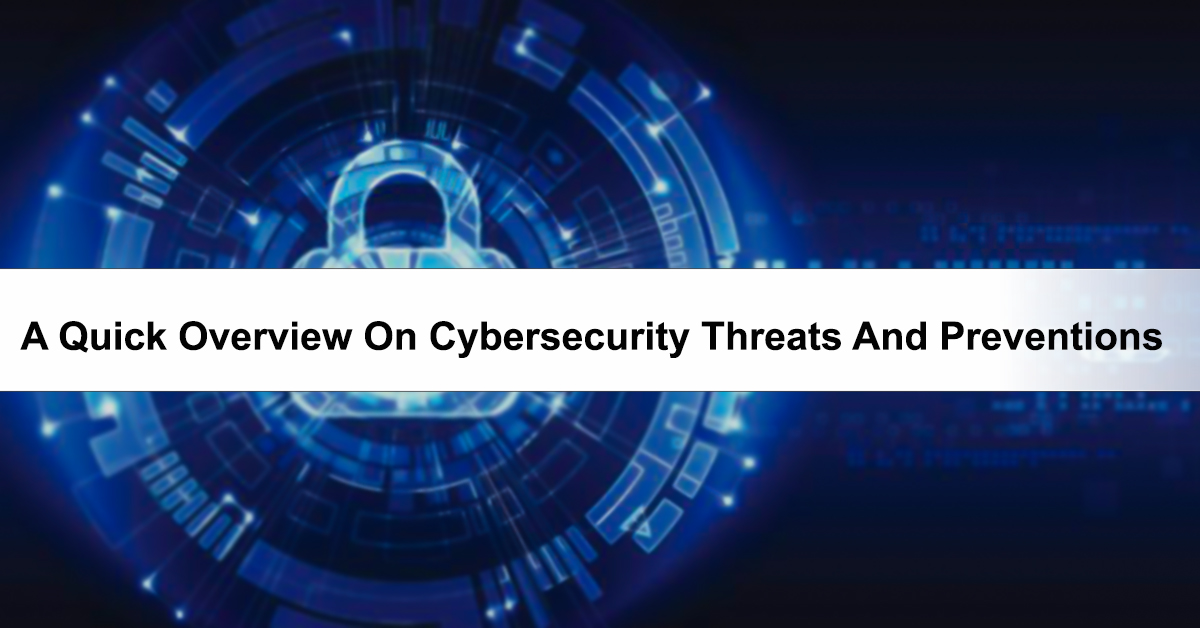Cybersecurity is the process of protecting and restoring networks, devices, and programs against any cyber attack. Cyber attacks represent a continually evolving danger for organizations, employees, and consumers. They can be designed to access sensitive data, destroy it, or extort money. They can destroy businesses and hurt people's financial and personal lives.
It focuses in particular on the protection of computer systems and their components - including hardware, software, and data - and the digital infrastructure against attacks, unauthorized access or damage caused or rendered inaccessible.
Violations have increased rapidly in recent years despite record levels of security spending. Cybersecurity companies are turning to human-centric Cybersecurity; a new approach focused on changing user behavior rather than an exponential number of growing threats. Based on behavioral analysis, human-centric Cybersecurity provides information about how an end user interacts with data and extends security controls to all systems hosting the data, even if the organization does not exclusively control them. Ultimately, this approach was designed to identify behavioral abnormalities to identify and prioritize the most severe threats, reducing investigation, and threat detection time.
To ensure Cybersecurity, it is necessary to coordinate efforts through an information system, which includes:
Application Security
Application security is focused on preserving software and devices that are free of threats. A compromised application could give access to data designed for protection. Strong safety begins at the design stage, well before the distribution of the program or device. Vulnerabilities in web applications represent a common intrusion point for cybercriminals. As applications play an increasingly critical role in organizations, businesses urgently need to focus on the security of Web applications to protect their customers, interests, and resources.
Network Security
Network security is about protecting a computer network from intruders, be they targeted attacks or opportunistic malware. It is the process of shielding the usability and integrity of the network and data. To do this, you typically need to perform a network penetration test
to assess vulnerabilities and network security issues on servers, hosts, devices, and network services.
Operational Security
Operational security includes processes and decisions for the management and protection of data resources. The permissions that users have when they access a network and the procedures that determine how and where data can be stored or shared all fall within this scope. Operations security protects the core functions of your organization by monitoring critical information and resources that interact with them to identify vulnerabilities.
End User Education
End-user education addresses the most unpredictable Cybersecurity Services: Anyone can accidentally introduce a virus into an otherwise secure system by not following good security practices. Teaching users to remove suspicious attachments, not connecting unidentified USB keys, and other vital lessons by Cyber Security consultant are essential to the security of any organization.
Types of threats
Tracking new technologies, security trends, and threat information is a daunting task. However, it is necessary to protect information and other assets against cyber threats, which take many forms.
Malware
Malware is software designed to access or damage a computer without the knowledge of its owner. The most common types of malware are spyware, keyloggers, viruses, Trojans, and worms.
Ransomware
Ransomware is one of the rapid growing forms of cyber attacks. It is a type of malware that requires payment after encrypting the victim's files, making them inaccessible. However, paying ransom does not guarantee the recovery of the encrypted data.
Social engineering
Social engineering is an attack based on human interaction designed to incite users to violate security procedures to obtain sensitive information that is generally protected. The common form of social engineering is a phishing attack.
Phishing
Phishing is a form of fraud consisting of sending fraudulent e-mails that look like e-mails from reliable sources. However, these emails are intended to steal sensitive data, such as credit card information or login information.
Advanced persistent threats
Advanced Persistent Threats (APTs) are a type of attack for integrity. These are attacks in which an unauthorized user infiltrates an undetected network and lingers in the network for a long time. The main aim of APTs is to steal data and not damage the network. APTs often occur in sectors containing valuable information, such as national defense, production, and the financial industry.
The following steps are essential for Cybersecurity:
Use trusted sites only when you provide your personal information. A good rule is to check the URL. If the site includes "https: //," it is a secure site. Avoid entering sensitive information such as credit card information or social security number on unsecured websites.
One of the most common ways to attack people is to use an email that is disguised as a message sent by someone you trust. Do not open click links in emails from unknown sources.
Always keep your devices up to date. Software updates contain essential fixes to resolve security issues. Cyber attackers are developing on obsolete devices because they do not have the latest security software.
Back up your files regularly to prevent Cybersecurity attacks. If you have to clean your device after a cyber attack, it will help you keep your records in a safe and separate place.
Cybersecurity is constantly evolving, which can make it difficult to stay up to date. Staying informed and paying attention online is two of the best ways to protect yourself and your business.
Final thoughts
The world depends on technology more than ever. As a result, the creation of digital data has increased. Today, Cybersecurity firms, businesses, and governments store a large amount of this data on computers and transmit it over networks to other computers. Peripherals and their underlying systems present vulnerabilities that, when exploited, harm the health and goals of an organization.
A data breach can have a series of devastating consequences for any business. This can damage a company's reputation by losing the trust of consumers and partners. The loss of critical data, such as source files or intellectual property, can cost a company a competitive advantage. Furthermore, a data breach can affect the company's revenues due to non-compliance with data protection regulations. With high-profile data breaches in the news, it's critical that businesses embrace and implement a strong Cybersecurity approach.


